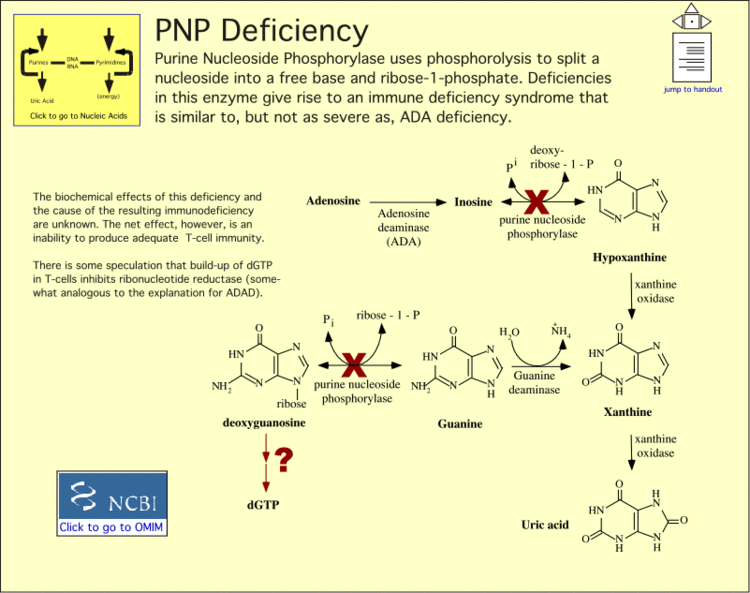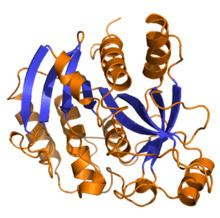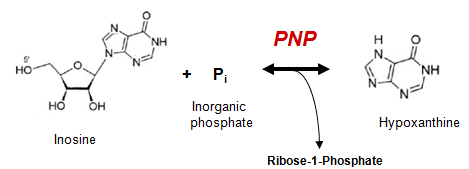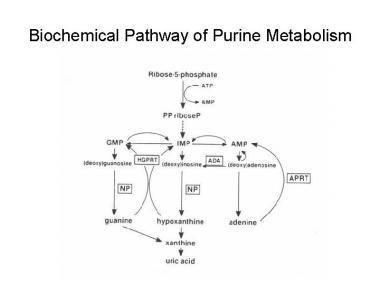EC number 2.4.2.1 ExPASy NiceZyme view Gene ontology 0004731 | CAS number 9030-21-1 | |
 | ||
Purine nucleoside phosphorylase physiology biochemistry and mechanism
Purine nucleoside phosphorylase also known as PNPase and inosine phosphorylase is an enzyme that in humans is encoded by the NP gene.
Contents
- Purine nucleoside phosphorylase physiology biochemistry and mechanism
- Purine nucleoside phosphorylase transition state trajectory
- Nomenclature
- Function
- Enzyme regulation
- Clinical significance
- References

In enzymology, a purine-nucleoside phosphorylase (EC 2.4.2.1) is an enzyme that catalyzes the chemical reaction
purine nucleoside + phosphate
Thus, the two substrates of this enzyme are purine nucleoside and phosphate, whereas its two products are purine and alpha-D-ribose 1-phosphate.

Purine nucleoside phosphorylase transition state trajectory
Nomenclature

This enzyme belongs to the family of glycosyltransferases, specifically the pentosyltransferases. The systematic name of this enzyme class is purine-nucleoside:phosphate ribosyltransferase.
Other names in common use include:
This enzyme participates in 3 metabolic pathways: purine metabolism, pyrimidine metabolism, and nicotinate and nicotinamide metabolism.
Function
Purine nucleoside phosphorylase is an enzyme involved in purine metabolism. PNP metabolizes inosine into hypoxanthine and guanosine into guanine, in each case creating ribose phosphate. Note: adenosine is first metabolized to inosine via the enzyme adenosine deaminase.
Nucleoside phosphorylase is an enzyme which cleaves a nucleoside by phosphorylating the ribose to produce a nucleobase and ribose 1 phosphate. It is one enzyme of the nucleotide salvage pathways. These pathways allow the cell to produce nucleotide monophosphates when the de novo synthesis pathway has been interrupted or is non-existent (as is the case in the brain). Often the de novo pathway is interrupted as a result of chemotherapy drugs such as methotrexate or aminopterin.
All salvage pathway enzymes require a high energy phosphate donor such as ATP or PRPP.
Adenosine uses the enzyme adenosine kinase, which is a very important enzyme in the cell. Attempts are being made to develop an inhibitor for the enzyme for use in cancer chemotherapy.
Enzyme regulation
This protein may use the morpheein model of allosteric regulation.
Clinical significance
PNPase, together with adenosine deaminase (ADA), serves a key role in purine catabolism, referred to as the salvage pathway. Mutations in ADA lead to an accumulation of (d)ATP, which inhibits ribonucleotide reductase, leading to a deficiency in (d)CTPs and (d)TTPs, which, in turn, induces apoptosis in T-lymphocytes and B-lymphocytes, leading to severe combined immunodeficiency (SCID).
PNP-deficient patients will have an immunodeficiency problem. It affects only T-cells; B-cells are unaffected by the deficiency.
